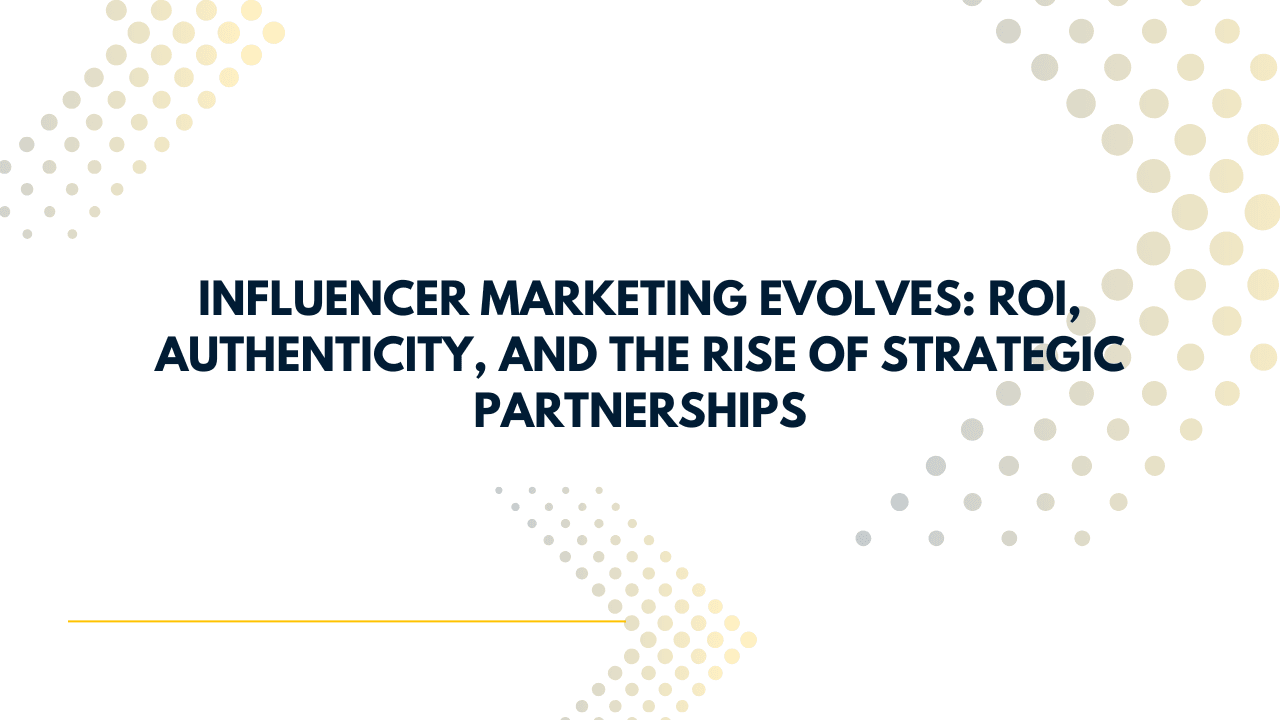Influencer Marketing Evolves: ROI, Authenticity, and the Rise of Strategic Partnerships

The influencer marketing industry, once driven by glamour and viral moments, is maturing into a disciplined and data-led channel. As social media audiences demand transparency and brands tighten their marketing budgets, ROI and authenticity have emerged as the defining benchmarks for success.
From Vanity Metrics to Business Impact
For years, follower counts, likes, and views were the yardsticks of influencer success. But in 2025, marketing teams are under pressure to prove tangible returns. Brands are now tracking:
- Conversion rates from influencer-driven campaigns
- Customer lifetime value of leads acquired through influencer channels
- Engagement quality — meaningful comments and shares over passive likes
- Attribution across touchpoints, ensuring influencer content contributes to the broader sales funnel
This shift mirrors a larger industry trend toward performance-based marketing, where campaigns are judged not just by reach, but by the bottom-line contribution they make.
Micro and Nano Influencers on the Rise
Data suggests that micro-influencers (10k–100k followers) and nano-influencers (<10k followers) consistently generate higher engagement rates than macro or celebrity influencers. Their smaller, more loyal communities tend to trust them as genuine voices rather than paid spokespeople.
These influencers often operate within tight-knit niches — from vegan baking and sustainable fashion to indie gaming and tech gadgets — giving brands access to targeted audiences with strong purchase intent.
Authenticity: The New Currency
One of the most profound changes is the demand for realness. Audiences have grown skeptical of overly polished, obviously sponsored posts. They now respond better to influencers who:
- Share personal experiences with the product
- Disclose sponsorships openly
- Offer balanced reviews, discussing pros and cons
- Integrate products naturally into their day-to-day lives
According to a 2025 Social Influence Study, 68% of consumers trust influencers who provide honest feedback, even if it’s not entirely positive. This makes transparency not just an ethical choice, but a strategic advantage.
Long-Term Partnerships Over One-Off Deals
Brands are moving away from short-lived campaigns toward ambassador programs that span months or even years. These extended relationships allow influencers to develop ongoing storylines with the product, building familiarity and trust with their audiences.
Such partnerships also give influencers greater creative freedom, resulting in content that feels organic, less scripted, and more in sync with the creator’s personal brand.
Technology’s Role in Smarter Influencer Marketing
While authenticity remains a human quality, AI and analytics tools are helping brands find the right voices. Advanced platforms now:
- Match influencers with brand values and audience demographics
- Predict campaign outcomes based on historical data
- Measure not just reach, but sales attribution and customer retention post-campaign
Marketers are increasingly blending machine-driven insights with human storytelling — using AI to optimize targeting and measurement, while letting influencers craft narratives that resonate emotionally.
The Road Ahead
The influencer marketing of 2025 is less about viral stunts and more about sustained influence. Brands that succeed will be those that:
- Measure real business outcomes instead of chasing surface-level engagement.
- Invest in smaller, niche creators with loyal followings.
- Foster long-term, trust-based collaborations rather than transactional posts.
- Allow creative freedom to keep content authentic and audience-focused.